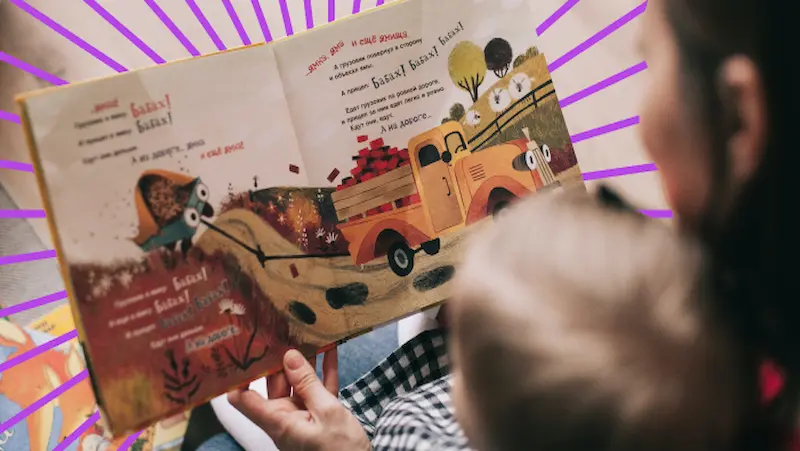Bedtime stories have been a cherished tradition in countless households around the world for generations. They are not only a source of joy and entertainment but also play a vital role in a child’s development.
The power of bedtime stories lies in their ability to captivate young minds, transport them to enchanting worlds, and nurture their imagination. In this modern age of technology and fast-paced lifestyles, the importance of bedtime stories should not be underestimated.
Research consistently highlights the benefits of bedtime stories in a child’s cognitive, emotional, and social development. Studies have shown that reading to children from an early age enhances their language skills, vocabulary, and overall literacy.
According to the American Academy of Pediatrics, reading aloud to young children stimulates brain development and strengthens parent-child bonds. Additionally, exposure to storytelling encourages creativity, critical thinking, and problem-solving abilities.
Beyond the cognitive advantages, bedtime stories also serve as an opportunity for emotional connection and character building. Through the adventures of beloved characters and their moral dilemmas, children learn valuable lessons about empathy, resilience, and ethics.
Moreover, the intimate act of sharing stories before sleep can create a sense of security, comfort, and routine, promoting a peaceful and restful night’s sleep for both children and parents.
In today’s digital era, where screens dominate our lives, bedtime stories provide a welcome escape from the virtual world. They offer a chance to unplug, unwind, and engage in shared storytelling experiences that foster human connection.

Furthermore, studies have indicated that exposure to screens before bed can disrupt sleep patterns and negatively impact a child’s overall well-being. By replacing screen time with the tradition of bedtime stories, parents can encourage healthier sleep habits and promote a more relaxed and soothing bedtime routine.
As we delve deeper into the world of bedtime stories for kids, it becomes evident that their significance extends far beyond the mere act of reading. They have the potential to shape young minds, ignite a lifelong love for literature, and create lasting memories.
In a fast-paced and ever-evolving world, bedtime stories offer a timeless and invaluable gift to children—a gateway to imagination, knowledge, and emotional development.
Table of contents
The Benefits of Bedtime Stories
In a world filled with screens and digital distractions, it’s easy to overlook the simple pleasure of a good book. However, the act of reading bedtime stories to children carries immense significance beyond its surface-level charm.
It serves as a gateway to a world of wonders, empowering young minds, fostering a lifelong love of reading, and forging unbreakable bonds between parents and their children. Let’s delve into the multitude of benefits that bedtime stories bring to the lives of both kids and parents. Parents can find a wide variety of short stories for kids that cater to different interests and age groups.

Enhancing Literacy Skills
Reading bedtime stories to youngsters is a fantastic approach to developing their literacy abilities. They are exposed to new vocabulary, phrase patterns, and concepts as they listen to stories. The vocabulary, language acquisition, and comprehension skills are improved by this exposure. Exploring the pages of epic books for kids is like embarking on a thrilling adventure through enchanted lands.
Their ability to read and write is also improved over time by regular exposure to a variety of words and ideas. Furthermore, storytelling’s rhythm and cadence aid kids in comprehending narrative structure, preparing them to tell stories well themselves in the future.
Cultivating a Love for Reading
Building a Lifelong Love of Reading: Bedtime stories help children develop a lifelong love of reading. Children form a positive emotional attachment to books when they relate reading with warmth, comfort, and special bonding experiences with their parents. Parents and children bond over the joy of reading books for kids, discovering new stories together.
They are more likely to view reading as a fun pastime than as a chore because of this favorable relationship. As kids get older, their love of reading stimulates their curiosity, broadens their creativity, and inspires them to independently research new genres, authors, and concepts.
Stimulating Imagination and Creativity
Children’s imaginations and inventiveness are stimulated when they are immersed in the enthralling realms of stories. They travel to wonderful worlds, amazing experiences, and exotic settings through bedtime stories. Also, engaging in easy drawing for kids is a fantastic way to express creativity and have fun.
Children’s imaginations are stimulated as they become involved with the tales and learn to picture the characters, locations, and events. In addition to being enjoyable, children’s imaginative play helps them develop their emotional intelligence, critical thinking skills, and ability to solve problems.
Developing Emotional Intelligence
Children can experience a range of emotions safely during bedtime reading. Children witness and empathize with a range of emotions, experiences, and viewpoints through the characters they meet in stories.
Children gain emotional intelligence and empathy when they relate to characters dealing with difficulties, overcoming conflicts, and expressing their emotions. Also, emotional regulation activities for kids help them learn to manage their feelings in healthy ways.
Bedtime stories give parents a chance to have deep dialogues with their children about emotions, morals, and values, assisting them in better understanding and managing their own emotions.
Creating Strong Parent-Child Bonds
The custom of reading bedtime stories to children fosters priceless moments of intimacy and connection between parents and kids. It creates a set period of time for undivided focus and interpersonal interactions.
Children feel safe and loved when parents read aloud to them, and the calming rhythm of their voice aids in helping them wind down before bed. This particular one-on-one time promotes trust, solidifies the link between parents and children, and establishes a framework for open communication.
Additionally, it gives parents a chance to transmit their beliefs, customs, and cultural history to their children through tales that speak to their particular family identity.
Choosing the Right Bedtime Story
Bedtime stories have been an age-old tradition that not only helps children relax and unwind before sleep but also plays a crucial role in their cognitive and emotional development. Selecting the right bedtime story for your child can be a delightful and rewarding experience, but it can also be a bit overwhelming with the myriad of options available. Scary stories for kids are like rollercoaster rides, full of twists and turns that send shivers down their spines
In this blog post, we will offer you some valuable tips to help you choose the perfect bedtime story for your little one, taking into consideration their interests and age level.

Know your child’s interests
The first and most crucial step in picking a bedtime story is to take your child’s interests into account. Every child has different preferences, therefore making the narrative fit their interests will make it more interesting and fun for them.
Pay attention to what holds your child’s interest during playtime or during their preferred TV programs for kids. Are they enthralled by superheroes, animals, princesses, or dinosaurs? You can reduce the number of potential stories and discover one that appeals to them by being aware of their hobbies.
Consider age appropriateness
Think about age appropriateness: While it’s important to pick a story that fits your child’s interests, it’s also crucial to take their age level into account. Age-appropriate literature guarantees that the subject matter, vocabulary, and complexity of the plot are appropriate for your child’s comprehension and growth.
Younger children benefit greatly from books with vivid illustrations and straightforward, repeating language. As they get older, they could enjoy lengthier stories with more intricate plots that stretch their language and creativity. Mindfulness activities for kids help them stay present and focused, even in the midst of a busy day.
Seek variety
Even though it’s normal for your child to have a few favorites that they ask for time and time again, exposing them to a wide range of stories helps extend their horizons and inspire their creativity. Investigate many literary genres, such as fables, adventure novels, and even non-fiction works.
The literature world is enormous, and introducing your child to various themes and genres can not only broaden their knowledge but also foster a passion for reading in them.
Involve your child in the decision-making process
By including them in the story-selection process, you may empower your child. Take them to the bookshop or library and let them peruse the bookcases for any stories that strike their attention.
Give them a few options to choose from, and let them say which they prefer. This encourages their independence while also assisting in the growth of their decision-making abilities.
Consider the length
Ideal bedtime stories should be brief enough to fit in the allocated time before falling asleep, yet long enough to hold your child’s interest and offer a satisfying conclusion.
Choose a story that can be read in 10 to 15 minutes, depending on your child’s age and attention span. Longer stories can be divided into several parts, building excitement for the following evening.
Our Top 50+ Bedtime Stories
Bedtime stories have been a cherished tradition for generations, transporting children to a world of imagination and wonder before they drift off to sleep. Whether you’re looking for classic fairy tales or modern favorites, this comprehensive list of 50+ bedtime stories will delight and captivate young minds. Parents read captivating short stories for kids, sparking their imaginations before bedtime
From enchanting adventures to heartwarming tales, each story has been carefully selected to suit different age groups, ensuring a magical bedtime experience for every child.

1. “Cinderella” (Ages 4-8):
This beloved fairy tale follows the timeless journey of a kind-hearted girl who overcomes adversity with the help of her fairy godmother. It teaches important lessons about kindness, resilience, and the power of dreams.
2. “The Velveteen Rabbit” (Ages 5-9):
This heartwarming story explores the transformative power of love. It follows a stuffed rabbit who becomes “real” through the affection of a young boy, teaching children the value of empathy and the beauty of being loved.
3. “Where the Wild Things Are” (Ages 4-8):
Max, a young boy with a wild imagination, embarks on an extraordinary adventure to a land of monstrous creatures. This imaginative tale celebrates the power of imagination and reminds children of the comfort of home.
4. “The Little Mermaid” (Ages 6-10):
Hans Christian Andersen’s classic tale tells the story of a mermaid who longs to become human and find true love. This magical story touches on themes of sacrifice, identity, and the importance of staying true to oneself.
5. “Goodnight Moon” (Ages 1-4):
A soothing and rhythmic bedtime story, “Goodnight Moon” takes young readers through a series of familiar objects as they bid goodnight to each one. It’s perfect for creating a calming atmosphere and helping toddlers wind down for sleep.
6. “The Lion and the Mouse” (Ages 3-7):
Aesop’s fable teaches children the value of kindness and how even the smallest acts can have a big impact. The story follows a mouse who saves a lion, demonstrating the power of friendship and gratitude.
7. “Peter Pan” (Ages 7-11):
Join Peter Pan, Wendy, and the Lost Boys on their journey to Neverland, a world of eternal childhood. This classic adventure celebrates the joy of imagination, friendship, and the magic of never growing up.
8. “The Snow Queen” (Ages 6-10):
In this captivating tale by Hans Christian Andersen, Gerda embarks on a quest to save her friend Kai from the icy clutches of the Snow Queen. It explores themes of love, loyalty, and the triumph of good over evil.
9. “The Giving Tree” (Ages 5-8):
This poignant story by Shel Silverstein tells the tale of a tree and a boy who develop a unique bond. It beautifully illustrates the concepts of selflessness, gratitude, and the enduring nature of love.
10. “The Ugly Duckling” (Ages 4-8):
Hans Christian Andersen’s classic teaches children the importance of self-acceptance and embracing differences. It follows the journey of a young swan who discovers his true identity and finds his place in the world.
11. “Winnie-the-Pooh” (Ages 3-7):
Join Pooh Bear, Piglet, and their friends in the Hundred Acre Wood as they embark on charming adventures. This collection of stories emphasizes friendship, kindness, and the joy of simple pleasures.
12. “The Princess and the Pea” (Ages 4-8):
This fairy tale by Hans Christian Andersen tells the story of a princess and a tiny pea hidden beneath a stack of mattresses. It teaches children the value of sensitivity and how appearances can be deceiving.
13. “The Jungle Book” (Ages 6-10):
Rudyard Kipling’s classic tale follows Mowgli, a young boy raised by wolves in the jungle. It explores themes of friendship, courage, and the delicate balance between man and nature.
14. “Charlotte’s Web” (Ages 7-11):
This beloved story by E.B. White revolves around the friendship between a pig named Wilbur and a spider named Charlotte. It teaches children about loyalty, empathy, and the circle of life.
15. “Alice’s Adventures in Wonderland” (Ages 8-12):
Follow Alice down the rabbit hole into a whimsical world filled with peculiar characters and nonsensical situations. Lewis Carroll’s imaginative tale encourages curiosity, individuality, and embracing the absurd.
Some other amazing bedtime stories are as follows:
16. “antique love” by Evan Schoettle
17. “Mouse!” by Michal Przywara
18. “Home of the Brave” by Thom Brodkin
19.“Beyond Words” by Matt Francis
20.“Monster Under My Bed” by April Mattson
21. “The Wolf Who Cried Wolf” by Tina Baker
22. “The King’s Task” by David Hudson
23. “Rumored Through Richmond” by Young Akpasubi
24.“Strangle the Wrangle” by Hamzah Malik
25.“Caroline Crawly” by Colleen Ireland
26.“The Starling and the Fisher” by Tanya Humphreys
27.“ A Tale of Love that Encompasses, Time” by MG SINGH
28. “Jeremy’s Sliver” by Hope Linter
29.“The Chocolate Caper” by Keira Dyer
30.“The Bakery Box” by Evan Thorne
31.“Goldilocks Side” by Jacob Derouen
32.“Heirlooms” by RJ Holmquist
33. “antique love” by Evan Schoettle
34.“Martha And Her Kite ” by Chelsey B
35.“What Falls with Snow” by Antonia Sullivan
36. “Once Upon All Times” by Laurel Hanson
37. “The perfect present” by Cathy Gale
38.“The New Cat” by Alexander Hanna
39.“Dreamland” by Eddie Lay
40. “Dear God…” by Liz Orvis
41.“Journey Awaits” by Jack Barber
42.“Dragon Hoard” by Nell Benton
43. “In a Room” by Max Thomas
44. “See it. Say it. Sorted.” by Karen McDermott
45. “Forever Good Night” by Mike Rush
46.“A Way Home” by Benjamin Gibbs
47. “Beyond Words” by Matt Francis
48. “HELLO DOLLY” by Peter Naughton
49.“A True Gift” by Cengiz Kıbrıslı
50. “The Letter of Magic” by Penny Pepper
Making Bedtime Storytime Fun
Bedtime stories hold a special place in the hearts of both parents and children. They offer a precious opportunity for bonding, nurturing imagination, and creating lasting memories.
To make bedtime storytime an enjoyable and engaging experience for both parent and child, incorporating props, and character voices, and encouraging participation can truly transform the ordinary into something magical. Teachers use stories for kids to inspire learning and spark creativity in the classroom.
In this blog post, we will explore some wonderful tips to enhance your bedtime storytelling sessions and create cherished moments together.

Set the Stage
Before diving into the story, create an inviting and cozy atmosphere. Dim the lights, use soft pillows and blankets, and establish a comfortable reading nook. This sets the stage for a relaxing and immersive experience that captivates your child’s attention and sets the mood for storytelling magic.
Choose Books with Illustrations
Select books that are richly illustrated and visually appealing. The vibrant pictures not only stimulate your child’s imagination but also provide visual cues for the story. Encourage your child to explore the illustrations, pointing out interesting details and asking open-ended questions to keep them engaged throughout the reading.
Use Props and Visual Aids
Props can transform a simple story into an interactive adventure. Gather relevant props or create simple ones using household items. For example, if the story involves animals, bring along stuffed animals or make simple masks to represent the characters. This hands-on approach allows children to connect with the story on a deeper level and makes it come alive in their imagination.
Bring Characters to Life with Voices
One of the most exciting aspects of storytelling is the opportunity to bring characters to life through voices. Use different voices, accents, and tones to differentiate between characters and make them memorable. Encourage your child to participate by voicing characters as well. This interactive element not only adds excitement but also encourages language development and creativity.
Encourage Participation and Creativity
Storytelling should be a two-way experience. Encourage your child to actively participate by asking questions, making predictions, or suggesting alternate endings. This involvement ignites their creativity and critical thinking skills. You can also incorporate opportunities for physical movements, such as acting out certain scenes or imitating animal sounds.
This active engagement helps your child feel like an integral part of the story and strengthens their connection to the narrative.
Personalize and Adapt the Story
To make the storytime experience truly special, personalize the story whenever possible. Modify character names to match your child’s or incorporate elements from their own lives. This personal touch sparks their interest and makes the story feel tailor-made for them.
Additionally, be flexible and adapt the story based on your child’s preferences and attention span. It’s okay to summarize or skip parts that might not resonate with them to keep the story flowing and engaging.
Conclusion
In conclusion, bedtime stories hold immense importance in a child’s development and well-being. These cherished narratives offer far more than just a comforting end to the day; they serve as powerful tools for learning, bonding, and fostering imagination in children.
By incorporating bedtime stories into their nightly routine, parents provide their children with numerous benefits that will positively impact their lives.
Firstly, bedtime stories play a vital role in promoting literacy and language development. As children listen to stories, they are exposed to a rich vocabulary, sentence structures, and storytelling techniques.
This exposure helps expand their vocabulary, enhances their comprehension skills, and cultivates a love for reading and learning. Bedtime stories also ignite children’s creativity and imagination, allowing them to visualize characters, settings, and events in their minds.
Secondly, the act of sharing bedtime stories creates a special bond between parents and children. It provides an opportunity for quality one-on-one time, fostering a sense of security, love, and connection.
The soothing rhythm of a parent’s voice and the closeness shared during storytelling promote a calm and peaceful atmosphere, preparing children for a restful sleep. These moments of shared storytelling become cherished memories that both parent and child will treasure for years to come.
Lastly, incorporating bedtime stories into a nightly routine establishes healthy habits and rituals. Consistency and structure are crucial for children’s overall well-being, and bedtime stories provide a predictable and calming routine that signals the transition from wakefulness to sleep.
The ritual of reading before bed creates a sense of security and comfort, reducing anxiety and promoting a restful night’s sleep.
In light of these benefits, it is crucial for parents to prioritize bedtime stories as an essential part of their children’s daily routines. By setting aside dedicated time for storytelling, parents can make a profound impact on their child’s development, fostering a love for reading, strengthening the parent-child bond, and nurturing their emotional and cognitive growth.
So, let us embrace the magic of bedtime stories and embark on this journey of imagination, knowledge, and connection with our children.
Visit the most recent entertaining blogs on BrightCHAMPS for more fun bedtime stories & best coding for kids.
Also, BrightChamps provides a comprehensive platform for learning about money for kids, offering interactive and engaging resources that teach financial literacy, budgeting, saving, and other essential money management skills. Check out learning money for kids.
Frequently Asked Questions
A1: The best bedtime stories for kids vary depending on their interests and age. Classic choices include “Goodnight Moon,” “The Cat in the Hat,” and “Where the Wild Things Are.”
A2: Bedtime stories can enhance a child’s development by promoting language skills, creativity, imagination, and cognitive abilities. They also foster a love for reading and bonding with parents or caregivers.
A3: Popular bedtime story themes for kids include fairy tales, animals, adventure, friendship, fantasy, and moral lessons. Some examples are princess tales, animal adventures, magical worlds, and stories about sharing and kindness.
A4: It is beneficial to read bedtime stories to your child regularly. Aim for a consistent routine, such as reading every night or a few times a week. However, the frequency can vary depending on your family’s schedule and preferences.
A5: Age-appropriate bedtime stories for toddlers can include simple, engaging tales with colorful illustrations. Some suggestions are “Goodnight Gorilla,” “The Very Hungry Caterpillar,” and “Guess How Much I Love You.”


 We are an army of educators and passionate learners from BrightChamps family, committed to providing free learning resources to kids, parents & students.
We are an army of educators and passionate learners from BrightChamps family, committed to providing free learning resources to kids, parents & students.












